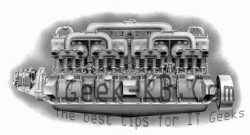Tutorial: Find MySQL Table Storage Engine
MySQL supports several storage engines that act as handlers for different table types. MySQL storage engines include both those that handle transaction-safe tables and those that handle nontransaction-safe tables.
As of MySQL 5.1, MySQL Server uses a pluggable storage engine architecture that enables storage engines to be loaded into and unloaded from a running MySQL server.
There is a simple way to find out current storage engine for any table(s) using SHOW TABLE STATUS query.
SHOW TABLE STATUS LIKE `User`; |
Column Engine in result of query above shows current storage engine for table `User`.
SHOW TABLE STATUS LIKE `User%`; |
Column Engine in result of query above (separate row for each table) shows current storage engine for tables like `User`, `UserPhoto`, `UserCommet` etc.
SHOW TABLE STATUS FROM `TestDB`; |
Query above allows to find out storage engine for each table in database.
SHOW TABLE STATUS WHERE `Engine` = 'InnoDB'; |
And this query allows to get list of tables with storage engine InnoDB.SQL query below helps to change table storage engine:
ALTER TABLE `User` ENGINE = MyISAM; |
find MySQL table storage engine information on MySQL 5.1 supported storage engines:
MyISAM: The default MySQL storage engine and the one that is used the most in Web, data warehousing, and other application environments. MyISAM is supported in all MySQL configurations, and is the default storage engine unless you have configured MySQL to use a different one by default.
InnoDB: A transaction-safe (ACID compliant) storage engine for MySQL that has commit, rollback, and crash-recovery capabilities to protect user data. InnoDB row-level locking (without escalation to coarser granularity locks) and Oracle-style consistent nonlocking reads increase multi-user concurrency and performance. InnoDB stores user data in clustered indexes to reduce I/O for common queries based on primary keys. To maintain data integrity, InnoDB also supports FOREIGN KEY referential-integrity constraints.
Memory: Stores all data in RAM for extremely fast access in environments that require quick lookups of reference and other like data. This engine was formerly known as the HEAP engine.
Merge: Enables a MySQL DBA or developer to logically group a series of identical MyISAM tables and reference them as one object. Good for VLDB environments such as data warehousing.
Archive: Provides the perfect solution for storing and retrieving large amounts of seldom-referenced historical, archived, or security audit information.
Federated: Offers the ability to link separate MySQL servers to create one logical database from many physical servers. Very good for distributed or data mart environments.
NDB (also known as NDBCLUSTER)—This clustered database engine is particularly suited for applications that require the highest possible degree of uptime and availability.
CSV: The CSV storage engine stores data in text files using comma-separated values format. You can use the CSV engine to easily exchange data between other software and applications that can import and export in CSV format.
Blackhole: The Blackhole storage engine accepts but does not store data and retrievals always return an empty set. The functionality can be used in distributed database design where data is automatically replicated, but not stored locally.
Example: The Example storage engine is “stub” engine that does nothing. You can create tables with this engine, but no data can be stored in them or retrieved from them. The purpose of this engine is to serve as an example in the MySQL source code that illustrates how to begin writing new storage engines. As such, it is primarily of interest to developers.
It is important to remember that you are not restricted to using the same storage engine for an entire server or schema: you can use a different storage engine for each table in your schema.



No Comments Yet